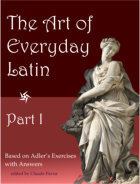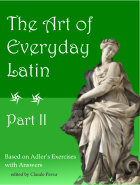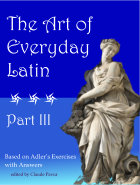
We learn to master short sentences before we gain a ready ability to understand and produce long ones. You should at first take some satisfaction in understanding of any of the phrases of this Acceleration Reader, whether or not the entire meaning of the context is clear to you. Let the larger sense emerge as you try to extend your understanding to the adjoining phrases. Then, once you have understood the parts, you should rehearse the act of "getting the meaning" of the full sentences in a smooth way.
All sentences are words that "hang together." Long sentences have many sub-groups that are meaningful as phrases or as clues for the larger structure of meaning. This Acceleration Reader format offers a device by which the subgroups can be highlighted and then integrated in your mind as you connect the phrases together.
Think of this old joke:
What is going on in this witticism? Unless you mentally register the first two words of the second sentence as the subject of the sentence, you tend to be tricked into misunderstanding it on the model of the first sentence, in which only the first word must be registered as the subject. When the proper subject is registered, you can more easily also register the third word like as a preposition (first sentence) or as a verb (second sentence). This process of ongoing, self-correcting registration of meanings and functions is essential in learning to understand communications.
In an Acceleration Reader, many times, but not always, the subject, or direct object, or indirect object, or verb, or conjunction is set off on a line by itself. The point in this kind of division is to facilitate your practicing that essential process of registering the word as something that has its own special function in the sentence. But there are also larger patterns that should be practiced, so you will find various other structures sectioned off on individual lines as well, e.g., consulem invenêrunt is an example of the syntactic pattern [direct object - verb].
The vertical arrangement here may seem unusual at first, but it is not very far from the very popular columnar layouts in magazines and newspapers.
Your task in reading is to integrate the larger idea of each sentence as you register the meanings and functions of the individual words and phrases.
Latin case-endings are the major clues that help you to register the functions (or syntax) of the nouns and pronouns of sentences. They also give you clues about which adjectives and adjectival phrases "hook onto" which nouns and pronouns.
Of course, the sentences could have been divided up differently than they have been divided here. I have not tried for perfect consistency, but I have generally aimed for shorter rather than longer units of meaning to make things easier for beginners. Sometimes, however, three or more short lines will have to be understood as a unit. The parts nevertheless remain fragments for which some registering of meaning should be practiced. For example, if there is a very long genitive expression like "of those preparing to face their enemy near the river," then it is important to learn to perceive and understand this collocation of words whether or not you have the noun to which the genitive phrase belongs. In Latin, that noun may or may not be immediately attached.
Only if readers learn to register the meanings and functions of the parts of a sentence bit-by-bit in its unfolding will they have the satisfactions that accompany the act of smooth and fluent reading.


